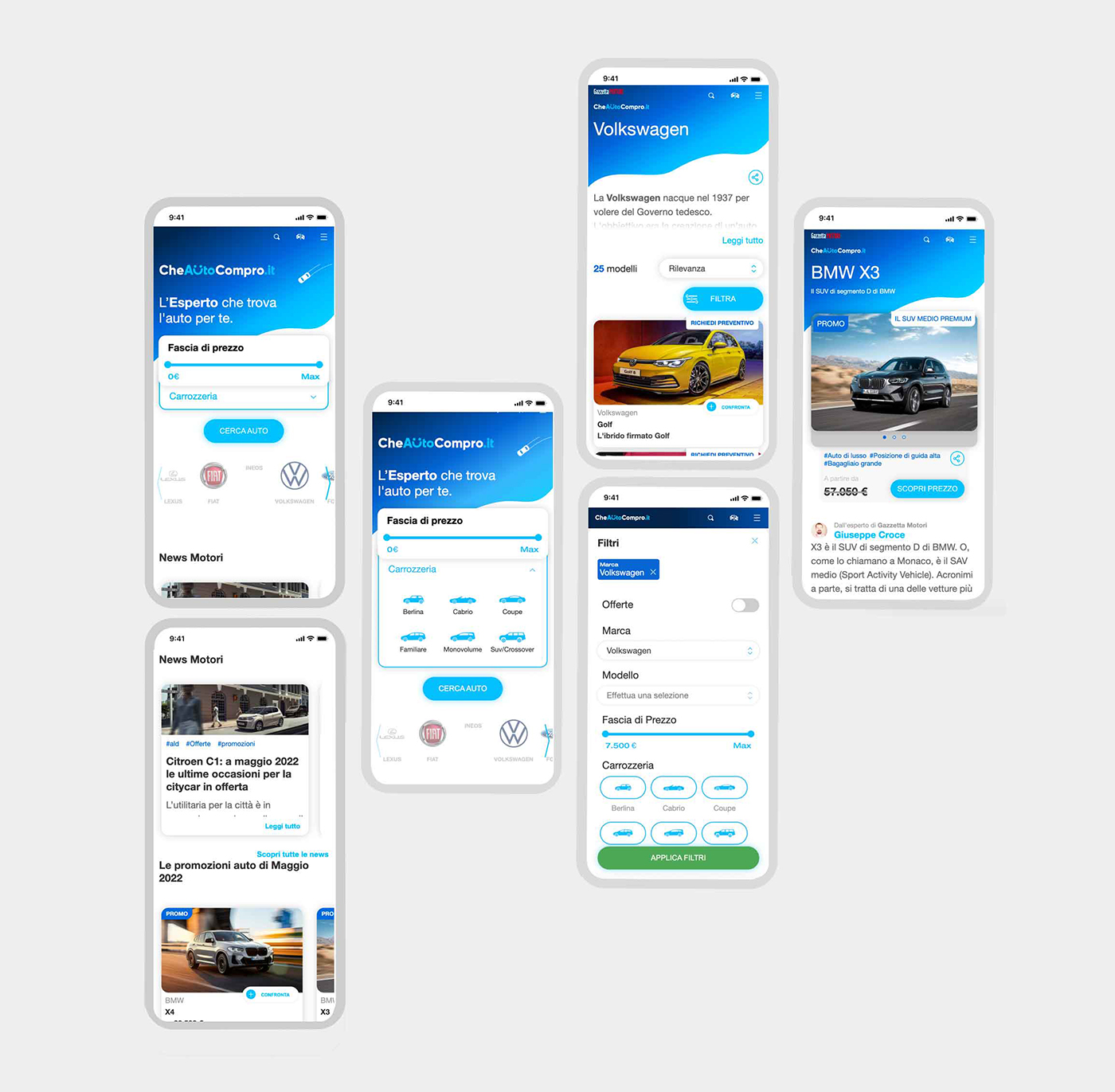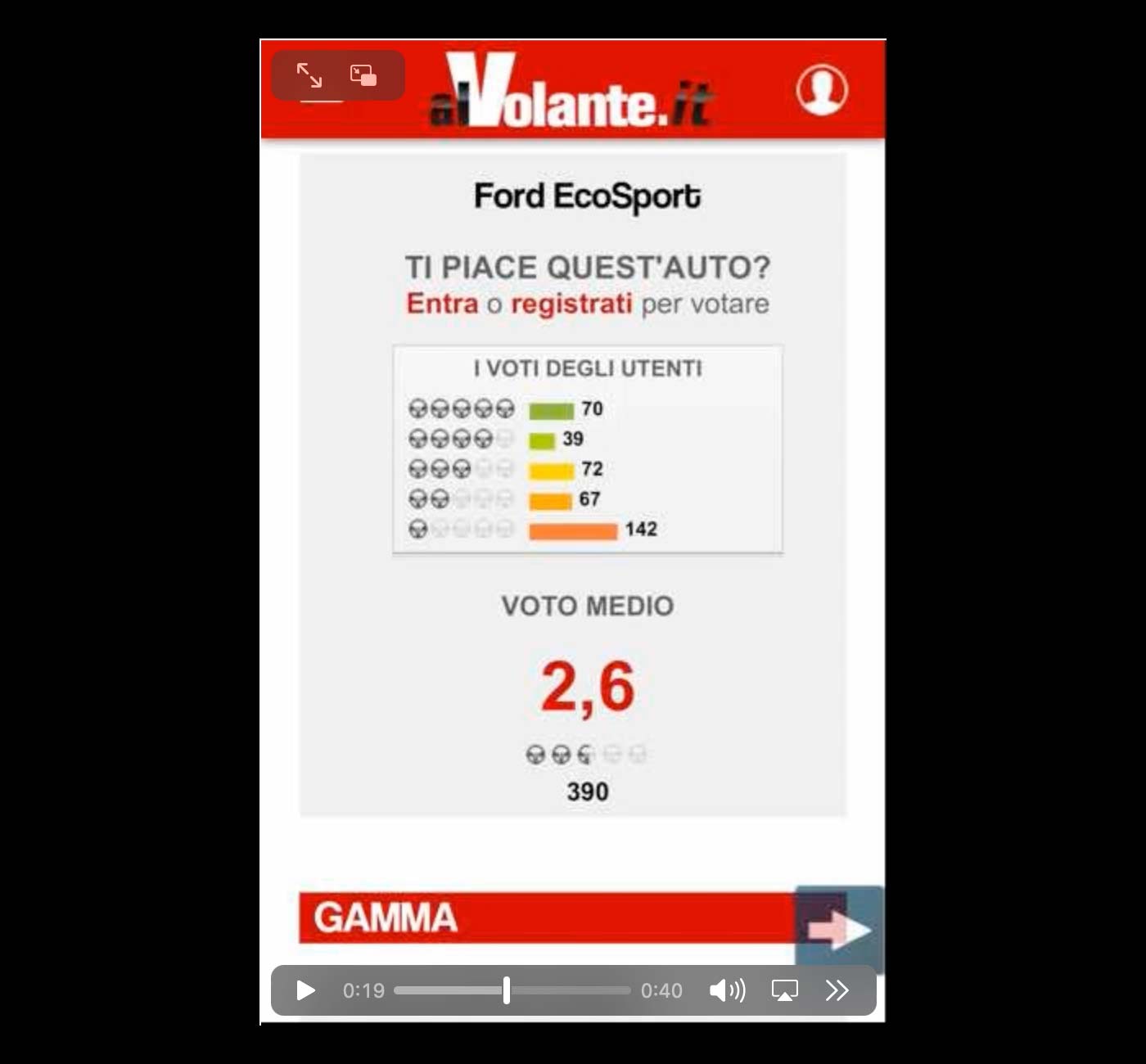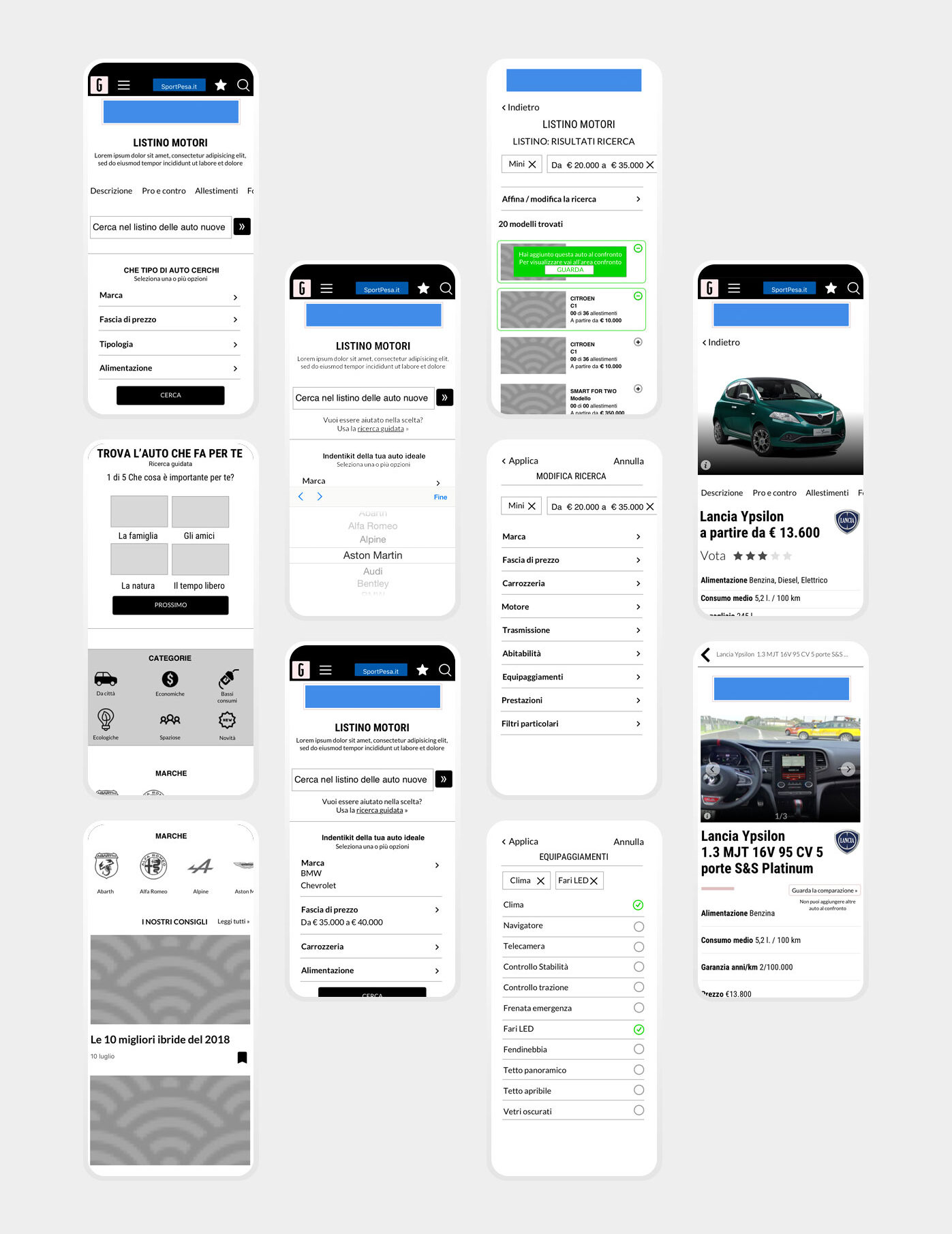Che Auto Compro
Overview
CheAutoCompro is a lead generation platform for the automotive industry developed by RCS in partnership with Accenture.
Problem
La Gazzetta dello Sport is a reference point for motorsport enthusiasts due to its consistent coverage of sports news and the latest updates in the automotive industry. The attention given by the audience to this content presented an untapped potential business opportunity.
Solution
Considering the presence of a wide and targeted user base on the Gazzetta website, we decided to expand the information offering by adding a section dedicated to car price lists to the Gazzetta dello Sport Motori section. Additionally, we created a standalone website optimized for lead generation, maximizing user interest.


Role
I assumed the following roles designing this native app:
- User Experience (UX) Designer
- Interaction (IxD) Designer
- UX Researcher
Deliverables
- Stakeholder Interviews
- Competitive benchmarking
- Heuristic Analysis
- One-on-one interviews
- Information Architecture (IA) Design
- User journeys and flowcharts
- Low-fidelity wireframes
- High-fidelity mockups and prototypes
- Usability tests and findings
- Iterative Improvements
- High-fidelity interactive prototypes for key tasks
- Presentation to stakeholders
Project Specifications
Duration 10 weeks
Tools:
-
- Sketch
- Hotjar
- Userzoom
- Invision
- Zeplin
- RP Axure
- Adobe Analytics
Process
Discovery
In the context of this project the discovery phase played a crucial role in product development. The research phase was set up with the goal of investigating the experience and motivations of users who were considering purchasing a new car.
We began by defining a research plan that allowed us to examine user reactions when browsing competitors’ sites. This starting point helped us establish product goals and guide the subsequent qualitative investigation. We involved eight users, six men and two women, ranging in age from 25 to 55 years old, who had recently purchased a car or were about to do so. We conducted think-out-loud sessions with each of them in order to achieve the following objectives:
- Evaluate user behavior in relation to competitor websites.
- Investigate user understanding and expectations regarding this type of service.
- Identify common patterns of behavior.
We assigned users five tasks to perform on the websites of the main competitors we identified, followed by a final questionnaire about their experience. The users were asked to:
- Search for information about cars through free search.
- Look for information about a specific type of car within one of the proposed sites.
- Filter search results by adding a parameter.
- Compare the results obtained.
- Configure one of the results by adding an optional feature.
Qualitative Results:
In general, the examined price lists provided timely service for a single car model. However, some users expected assistance in making a choice, which was not provided to them, causing frustration in their experience.
- Accessing the price lists, especially advanced search and additional services like the configurator and comparison, was particularly challenging on mobile devices and not easily accessible to users.
- Users appreciated editorial content that supplemented the car listings. Rankings and videos helped users navigate their choices.
- User-generated content was not highly appreciated and considered less reliable.
- Brand-specific searches worked well and met the needs of users with knowledge of the automotive market.
- Users expressed a strong need for a comparison area to form an opinion about choosing a car model.
- A step-by-step wizard would guide less experienced users towards selecting models suitable for their needs.

"I don't care much about this average rating because I usually disagree with user evaluations."

Design
Based on the results obtained from the research phase, we were able to derive important design insights and two types of users: the experienced one who knows the market and knows what he or she is looking for, and the inexperienced user who is clear about his or her needs but is not sure what to look for. By integrating these insights with product and development requirements, we moved on to the informed design of the product.
We focused on making it easy to access information from mobile particularly with regard to the advanced search and comparison tool considering that from analytics data we could predict 80% of access to the site from mobile.
We agreed with the editorial team to produce various formats including videos and rankings to be offered within the product to increase the information points for the user.
We emphasized brand search for more experienced users and designed a wizard that step-by-step, based on habits and needs would work out proposals.
Our approach involved weekly sprints, during which we focused on refining requirements, creating and approving wireframes, designing the user interface, and presenting to stakeholders.

Testing and Iteration
To ensure the validity of the design choices made, we conducted usability tests and click tests with representative users. These users were invited to perform tasks on interactive and non-interactive prototypes. Through these tests, we verified users’ understanding of interaction flows and interface elements, obtaining valuable feedback to improve the design and ensure it met user expectations and business goals.

Implementation and evaluation
The project involved the team in various implementation phases, which included publishing the site as both an integral part of the Gazzetta Motors section and as a standalone website called “Che Auto Compro”. Evaluations and iterations from the previous phases allowed us to integrate new requirements and constantly optimize the lead conversion rate.